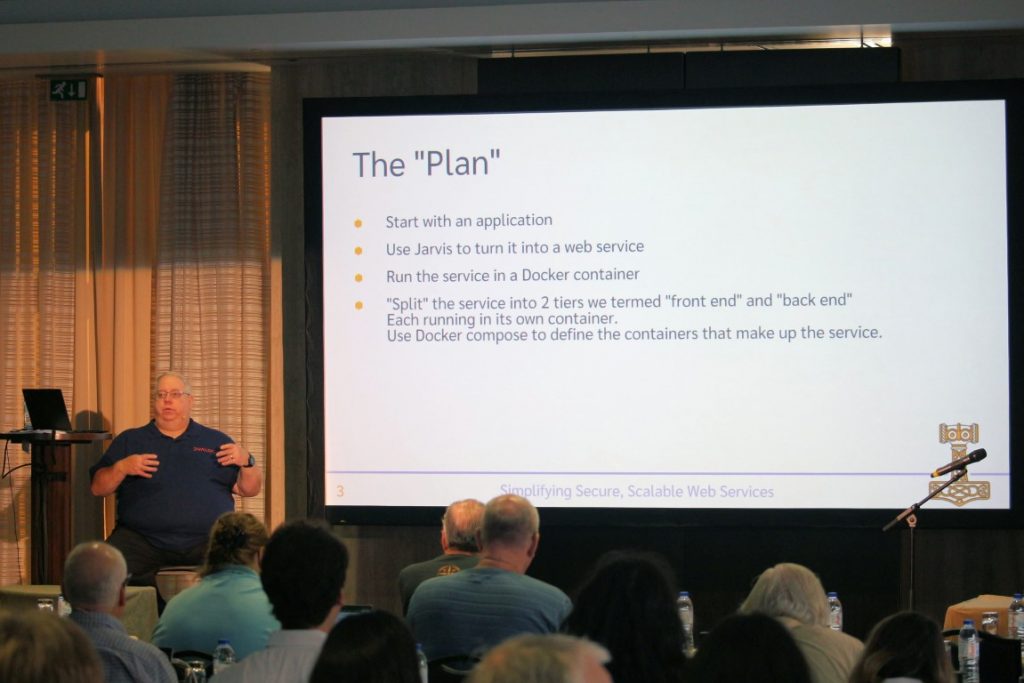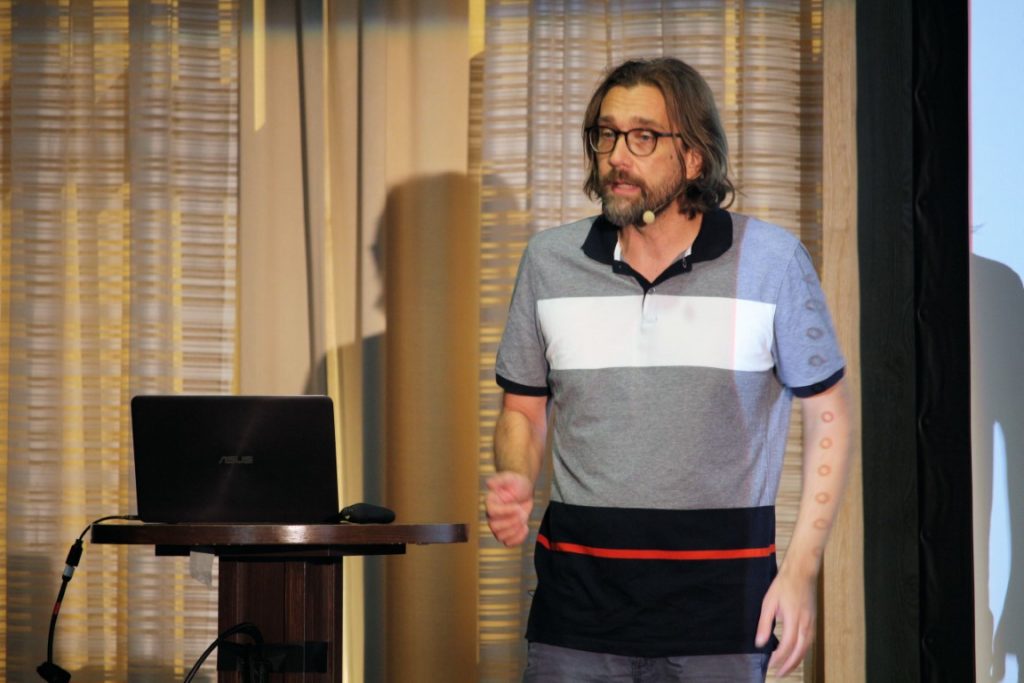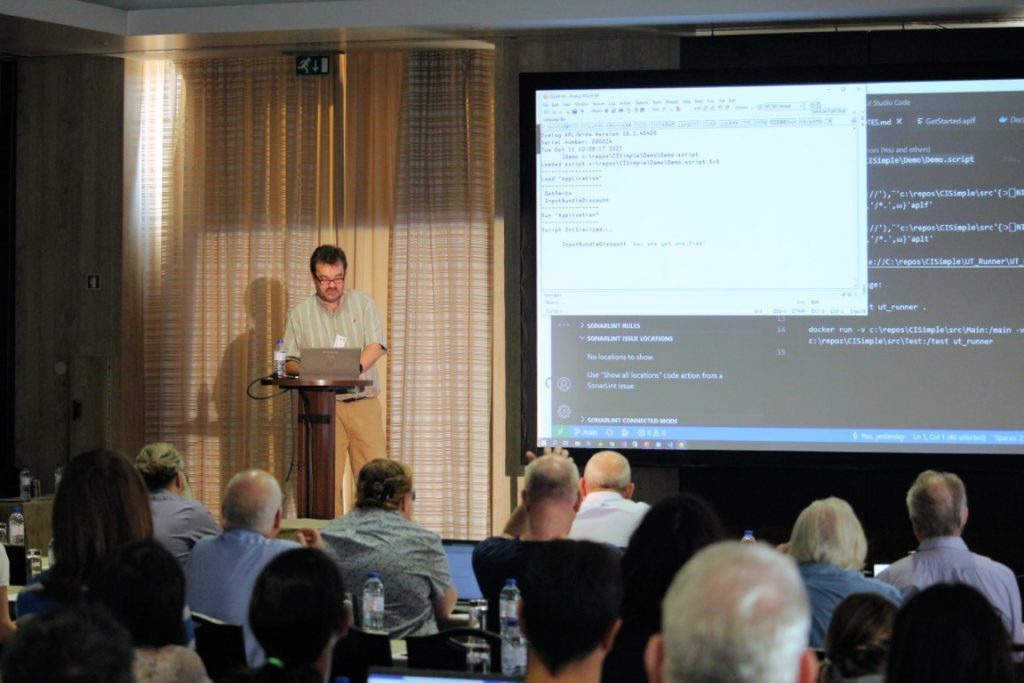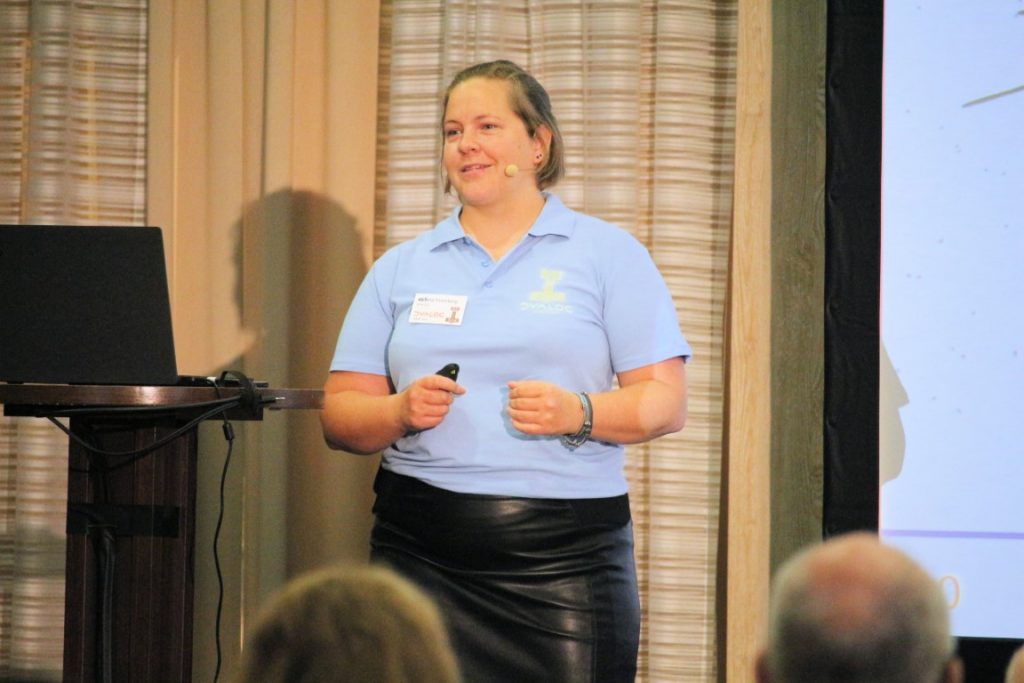Links to recordings from this day of the user meeting are at the bottom of this post.
To begin the final day of the user meeting, Aaron Hsu presented some strategies and ways of thinking about processing data that come from text. While his specific focus is parsing APL code for the co-dfns compiler, he believes that a parallel data-flow approach will be useful across domains, for example, when processing JSON data, which is common in modern web communication.

Aaron talks about parsing data from text
Adám Brudzewsky, despite not being in the room, captivated us with a supremely convincing argument for why three primitives could be considered to be filling in “core language” gaps: the “Select” function (⍺⊇⍵) for elegant indexing; the “Depth” operator (F⍥k) as analogous to rank (F⍤k) for nested arrays; and the “Behind” (F⍛G) operator complementing other function compositions “Beside” (F∘G), “Atop” (F⍤G) and “Over” (F⍥G) to make tacit programming an even better extension of APL expressivity.

Adám proposes a new “behind” function composition operator
It was exciting to see a return for APL to its birthplace in academia. Jesús Galán López of the Technical Univerity of Delft told us his plan to use APL in metallurgical models and analysis of experimental data. He hopes to use Dyalog APL as a central connecting piece in education, science, engineering and research. This is one of the first projects to eventually be supported by the APL fund mentioned by Stine on Monday.

Jesús with a typical data analysis example in materials science
A living legend in APL education, Raymond P. Polivka presented his latest book aimed at high school students with no programming knowledge whatsoever. The clearly structured modules and exercises will be an invaluable resource for teachers and recruiters alike, and they have been developed with both a lifetime of experience teaching APL as well as very recent classes with real high school students. He is asking for feedback on a draft available at aplclass.com/book.

Ray Polivka introduces his new book aimed at high school students
For the last talk of the user meeting, Rich Park took us on a whirlwind tour of the media and training materials being developed at the moment. He also commented on some of the work that he believes is needed to tie these resources together and make them more discoverable, and what might be done to improve the experience for new users trying to find things out for themselves.

Rich Park talks about media, training and outreach at Dyalog
In the afternoon we ended the user meeting with some workshops. We got to know about performance considerations in the context of the Dyalog interpreter with Aaron Hsu and Karter Kooner. There was a chance to get hands-on experience using one of the asynchronous, concurrent programming methods in Dyalog: Futures and Isolates with Morten Kromberg and John Daintree. Josh David and Brian Becker taught us about sharing APL tools by creating and publishing packages using Tatin.
It has truly been an incredible experience returning to in-person user meetings. The sense of community felt in Olhão this year was far beyond what most people predicted, not just in light of separation over the last two years, but also in looking forward to an exciting future for APL and Dyalog.
Today’s presentations (links to recordings will be added as they become available):
- D14: Text Processing in APL – Aaron Hsu
- D15: Filling the Core Language Gaps – Adám Brudzewsky
- U16: Dyalog and Academia – Jesús Galán López
- U17: What – Another APL Book? – Ray Polivka
- D16: Growing APLers – Rich Park


 Follow
Follow







![Michael Baas shows us the ]DTest framework](https://www.dyalog.com/blog/wp-content/uploads/2022/10/IMG_2878-Medium-1024x683.jpg)


















